- What to expect in the Chambal River Safari, Best season and How
to reach. Kunal, a wildlife enthusiast and photographer organises the safari.
Most travellers visiting Agra go to the Taj Mahal and Agra
Fort and head back not knowing that there is so much more to do in and around
this city than just that. On your next trip to Agra, consider going on a river
safari on the Chambal River.
This experience is just an hour drive from the City of the
Taj. You should have a taxi arranged to take you here as there is no public
transportation or if it is, most likely not safe. The entire experience takes
about 5-6 hours including the drive time to the river from Agra.
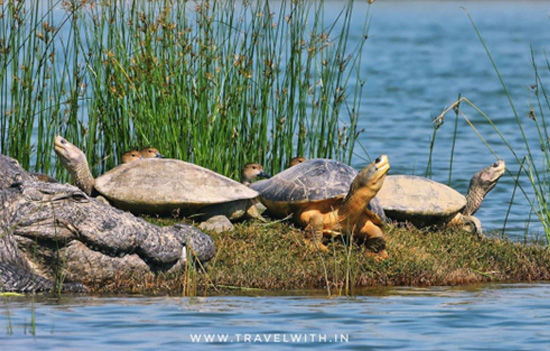 Three-striped Roofed Turtle, Lesser-whistling Ducks and Marsh Crocodile.
Three-striped Roofed Turtle, Lesser-whistling Ducks and Marsh Crocodile.
The National Chambal Sanctuary (400+ KM of protected waters)
comprises of the Chambal River which flows through the states of Madhya
Pradesh, Rajasthan and Uttar Pradesh before it merges in to the Yamuna. It was
declared a wildlife sanctuary in 1978.
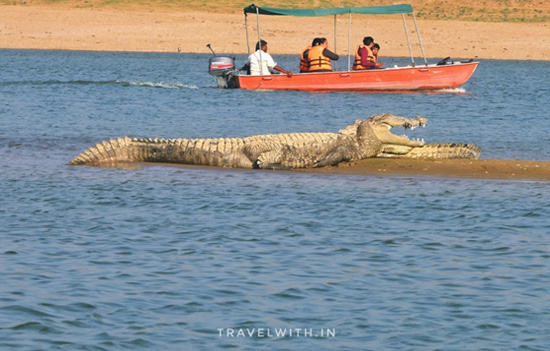 Marsh crocodile (Mugger).
Marsh crocodile (Mugger).
The Chambal River Safari is not your average safari. It is considered by many as a once in a lifetime safari on one of India's most 'alive' river eco-systems.
After all, in which river in India today, do you get to see
critically endangered Gharials, Indian Marsh Crocodile, Gangetic River Dolphin,
up to eight species of turtles including the critically endangered Red-crowned
Roofed Turtle, several resident and migratory birds including the endangered
Indian Skimmer? Apart from the aquatic wildlife and rich bird-life, mammals
such as the Striped Hyena, Jackal, Jungle Cat, Desert Fox can also be spotted
during the river safari.
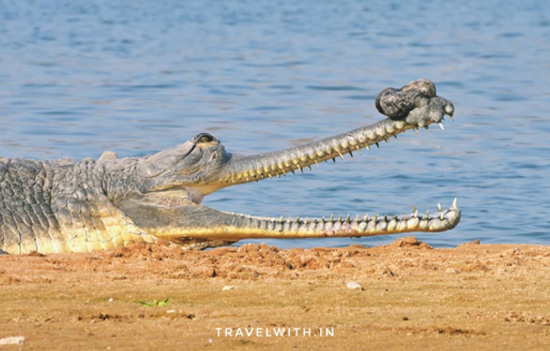 Male Gharial.
Male Gharial.
The ‘cursed’ Chambal river is mentioned in our Hindu tradition as well. One story is from Mahabharat and the infamous scene of Draupadi being disrobed (near the banks of the Chambal river) by the Kauravas when she was lost by her husbands over a game of dice. While she was being disrobed she cursed the Chambal's inhabitants that they would always live a life of revenge for not coming to her rescue.
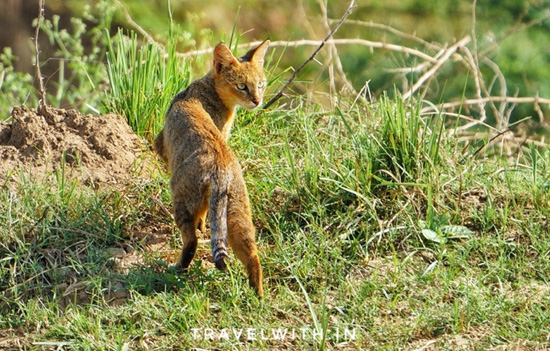 Jungle
Cat.
Jungle
Cat.
Another tradition says, that a mighty king in the Chambal
valley was foretold that in order to please the rain gods in his otherwise
parched kingdom, he must sacrifice a thousand cows. The King reluctantly did so
on the banks of the Chambal rather than in his kingdom. As a result, the river
was tainted with the blood and hides of thousands of cows for a very long time
and became known as - Chamravati or
the River of Hides.

In the 19th century, the river and its surrounding ravines
became famous for freedom fighters many of whom fought against the British Raj,
notably during the First war of Independence in 1857. Later on the Chambal
valley became infamous across the country for its notorious gangs of bandits -
many of whom robbed the rich and gave to the poor. In those days many (both men
and women) became baaghis (bandits or
dacoits) as they suffered in-justice due to the rampant disparities in the
social structure and biased law and order system.
 Ruddy Shelducks, Northern Pintails and Lesser
Whistling Ducks.
Ruddy Shelducks, Northern Pintails and Lesser
Whistling Ducks.
Thanks to the in-hospitable terrain, the mythological curses, the bandits and 'blood-thirtsy' crocodiles, the Chambal river remained largely un-polluted and no major cities or industries other than Kota (Rajasthan) were established along its banks for many years.
Today, there are four damns up-stream on the Chambal which
have caused a devastating effect on the survival of many species such as the
Gharial, some turtle species, Indian Skimmer and Black-bellied Tern.
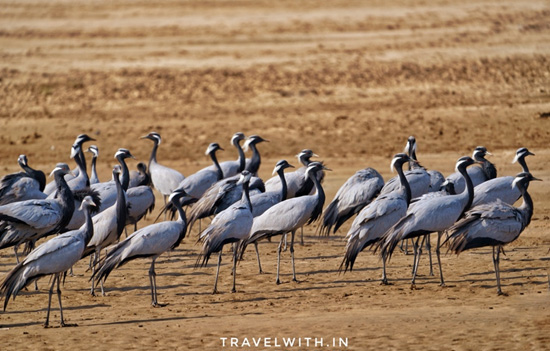 Demoiselle Cranes.
Demoiselle Cranes.
Best Season for Safari
The river safari is ideally done in the winter months
(October to April) but can also be done till June. While some of the boats have
canopies that provide much needed shade in peak summer months, it is still hot
(in the 40s) so please consider this before booking a safari in the months of
April, May and June.
From April onwards many winter migrants such as Pochards, Bar-headed
geese, Ruddy shelducks etc. fly back to their summer breeding grounds in Europe
and Central Asia. From July to September, the Sanctuary is officially
closed for safaris due to the monsoons.
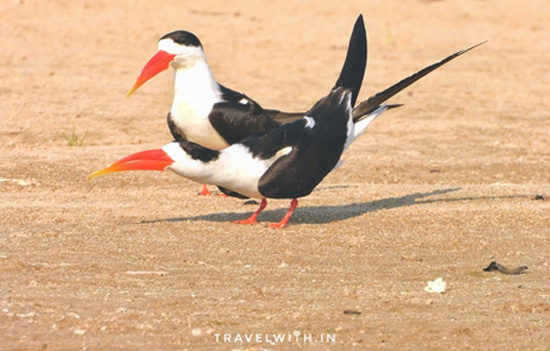 Indian Skimmer – pride of Chambal.
Indian Skimmer – pride of Chambal.
How to reach
The river safari is conducted on two different sides both within an hour driving distance from Agra. As such, Agra should be your base where you can stay in one of several hotels / home-stays fitting your budget. As such, Agra is recommended as the preferred place to stay as the city is equidistant from both the safari points i.e. Dholpur, Rajasthan and Bah, Uttar Pradesh. Dholpur can be reached from Gwalior too, about an hour’s drive.
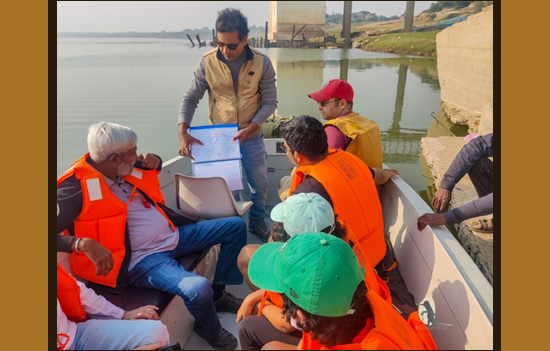 Kunal with guests on the Chambal.
Kunal with guests on the Chambal.
Our Contacts for Booking
If you are looking for an informative tour of the Chambal
then, please get in touch with Kunal Jain on +91 9717148483 or info@travelwith.in.
Kunal has been leading tours in the Chambal region since 2018 and will accompany you as your naturalist. He also takes photographs of the wildlife with his professional camera and shares a copy of the best photos with his guests. This way his guests don’t have to focus their energy and attention on photos with their cell phones. Kunal lives in Agra and meets his guests at a mutually agreed landmark. Together they drive to the river.
More
about the river safari here
Also see albums of
1. Dholpur,
Rajasthan
2. Bateshwar
Temple, Morena
3. Gwalior
Fort